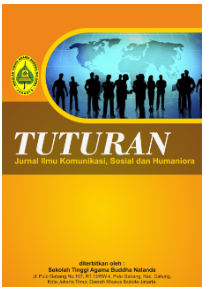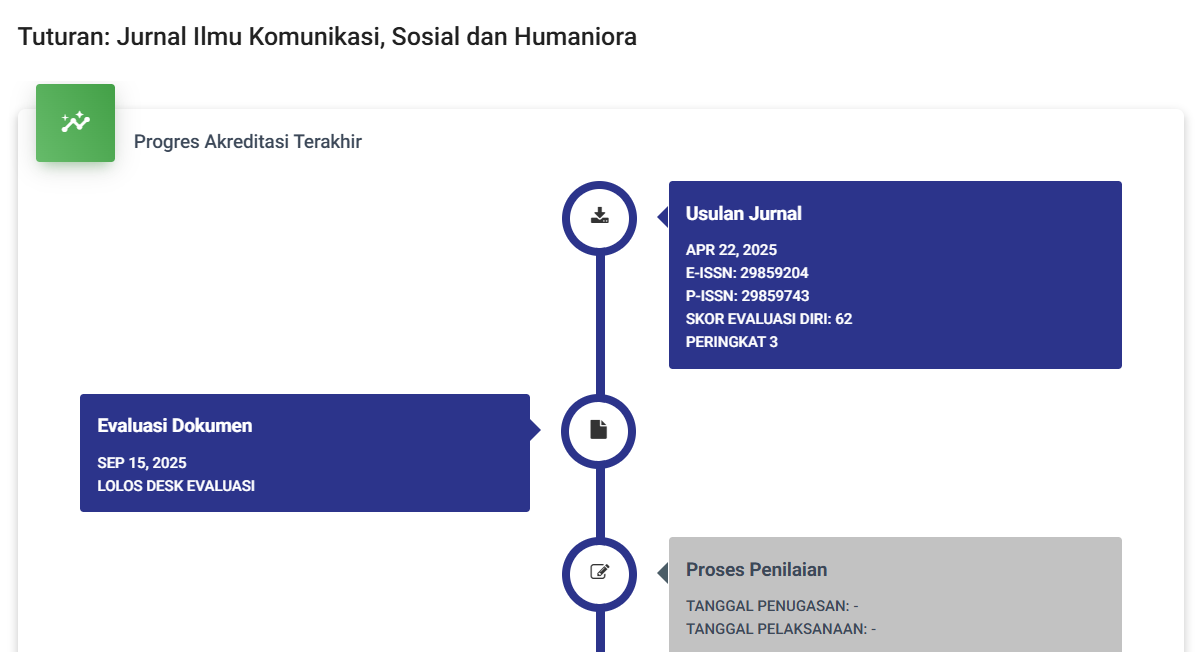Identitas Pemuda Kelompok Seni Paijo
DOI:
https://doi.org/10.47861/tuturan.v3i2.1846Keywords:
Paijo Arts Group, Youth Identity, Generation Z, New Order, Reformation, SymbolAbstract
This article discusses the Paijo art group as a medium for the formation and expression of the identity of today’s youth or Generation Z through the arts, especially in the field of theater. The shift from the New Order to the Reform Era has created an atmosphere that can lead youth to lose direction in their quest for identity. During the New Order era, "Gondrong" became a symbol of youth at that time, representing resistance and freedom of expression. However, the Reform Era, which has brought youth into the rapid development of technology and information, has created a gap between the millennial and Generation Z. Amidst this advancement, Generation Z is faced with global cultures that were previously difficult to access, resulting in many choices that ultimately lead youth into a crisis of identity. While in the New Order, binding policies produced a uniform and clear identity. The Paijo Art Group emerges as a reflective medium for youth in the process of discovering their identity through a creative and collaborative spirit. The symbols and emblems within the Paijo art group carry strong meanings that underlie the formation of this distinctive art group. This research is conducted to explore the importance of future goals for young people and to rise together, accompanied by the passionate fighting spirit they manifest within the Paijo art group, promoting the symbols and ideology of the group.
References
Baker, S., & Homan, S. (2015). Youth identity and arts participation: Developing a framework for community empowerment. International Journal of Cultural Studies, 18(6), 681–699.
Banks, M. (2007). The politics of cultural work. Palgrave Macmillan.
Basov, N., Lee, J.-S., & Antonyuk, A. (2018). Social networks and construction of culture: A socio semantic analysis of art groups. arXiv. https://arxiv.org/abs/1807.04698 instagram.com+4facebook.com+4paijoartco.wordpress.com+4arxiv.org
Bennett, A. (1999). Subcultures or neo-tribes? Rethinking the relationship between youth, style and musical taste. Sociology, 33(3), 599–617.
Bourdieu, P. (1991). Bahasa dan kekuasaan simbolik. IRCiSoD.
Côté, J. E., & Allahar, H. (1994). Generation on hold: Coming of age in the late twentieth century. New York University Press.
Creswell, J. W. (2015). Penelitian kualitatif & desain riset. Yogyakarta: Pustaka Pelajar.
Heinonen, P., & Ritvala, T. (2013). Sense of community and community building: The case of an artistic youth community in rural Finland. Community Development Journal, 48(3), 370–385.
Holme, P., & Gronlund, A. (2005). Modelling the dynamics of youth subcultures. arXiv. https://arxiv.org/abs/physics/0504181 arxiv.org
Kreutziger, D. ., & Leurs, K. (2020). Digital youth cultures: Narratives, identities, and cultural production. Media, Culture & Society, 42(4), 587–602.
Lang, R., & Reimer, S. (2018). Collective memory and identity in youth community arts. Cultural Trends, 27(2), 141–155.
Lenian, S. (2017). Youth artistic collectives and identity negotiation in post industrial cities. Journal of Youth Studies, 20(8), 1055–1071.
Maslakhah, U., & Sari, R. (2022). Realitas kerukunan antar umat beragama pada masyarakat Dusun Ngepeh Kecamatan Ngoro Kabupaten Jombang. Jurnal Entitas Sosiologi, 11(2), 159. https://doi.org/10.19184/jes.v11i2.33793
McRobbie, A. (1994). Postmodernism and popular culture. Routledge.
Menger, P.-M. (1999). Artistic labor markets and careers. Annual Review of Sociology, 25, 541–574.
Murti, W. B. W., & Rosa, D. V. (2021). On air: Representing Osing identity in community radio. Contemporary Sociological Issues, 1(1), 1–16. https://repository.unej.ac.id/handle/123456789/105599
Prasetyo, H., Rosa, D. V., & Sari, R. (2023). Beradab dengan adat: Politik identitas dalam ritualitas agama masyarakat Tengger. Prosiding Konferensi Nasional Sosiologi (PKNS), 1(2), 124–130. https://www.pkns.portalapssi.id/index.php/pkns/article/view/101
Rosenthal, A. (2001). Youth, theatre, and identity: Narratives of transformation. Theatre Research International, 26(2), 101–109.
Situngkir, H., & Prasetyo, Y. E. (2015). On social and economic spheres: An observation of the 'gantangan' Indonesian tradition. arXiv. https://arxiv.org/abs/1508.05352 arxiv.org
Thornton, S. (1995). Club cultures: Music, media and subcultural capital. University Press.
Downloads
Published
How to Cite
Issue
Section
License
Copyright (c) 2025 TUTURAN: Jurnal Ilmu Komunikasi, Sosial dan Humaniora

This work is licensed under a Creative Commons Attribution-ShareAlike 4.0 International License.








